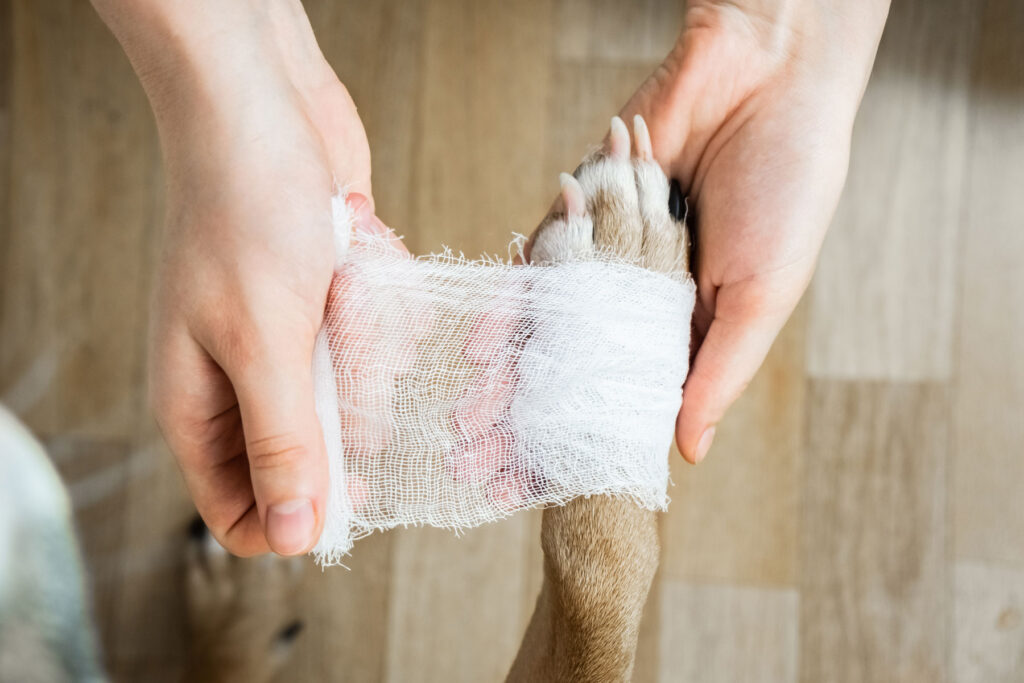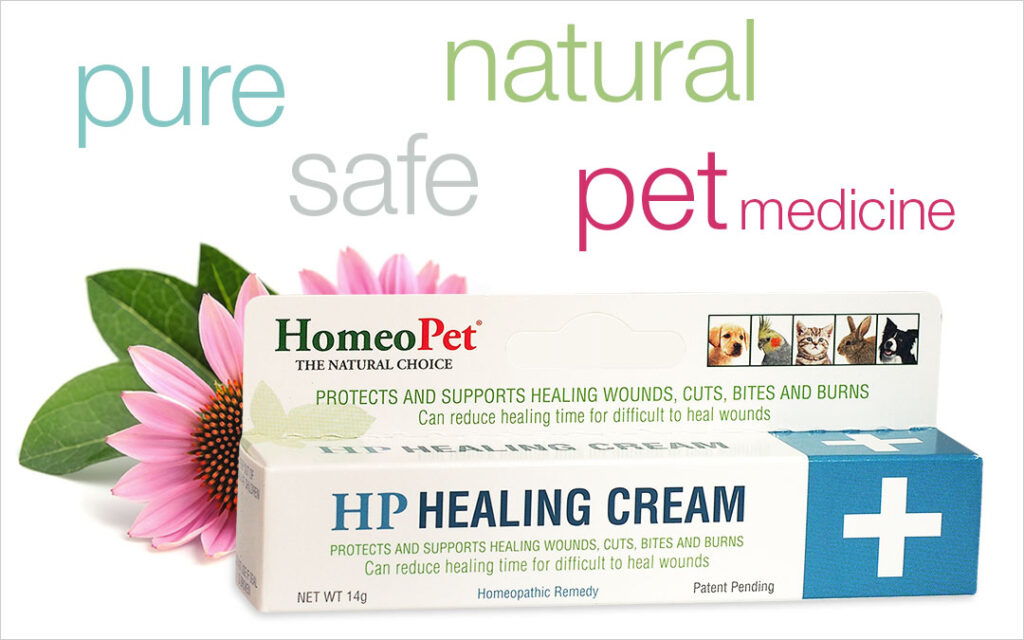Treating Wounds In Pets – HomeoPet
Dealing with cuts and scrapes is something that every pet parent will likely have to deal with at one stage or another. After all, accidents happen! So knowing how to clean and treat minor scrapes or cuts at home is an important skill to master, as is knowing when you should consult your veterinarian.
When Veterinary Attention Is Required
If you are ever in any doubt as to how to treat a wound your pet may have sustained, consult your vet. But as a general rule, the below injuries should be treated by your veterinarian and not at home:
- Any injury with profuse bleeding
- Any injury with severe trauma, such as where bones are involved or your pet is in distress
- Any injury that fully penetrates the skin, such as a bite wound or deep laceration
- Any injury that involves a large portion of the body or that is in an especially sensitive area
- Any injury where pus is visible or the skin around your animal’s wound is red and puffy
The First Steps In Wound Management In Animals
Cuts and scrapes happen when the skin is accidentally broken or worn away and the most important thing to remember when dealing with a cut or open wound is to get it clean and keep it clean. Dirt and debris around a wound can significantly delay healing and can lead to infection, which may require your veterinarian to prescribe antibiotics to prevent the infection spreading further.
You should only attempt wound care on your pet at home if you are confident that they will not react aggressively and even then it’s vital to recruit a competent assistant to restrain your pet. After all, your pet will not understand that what you are doing is for their own good and will likely object to treatment. If the wound is on a dog, it’s a good idea to use a muzzle in case they react to any pain. Better safe than sorry.
Have your pet first aid kit at the ready as well as clean fresh water. It can also be useful to have small electric clippers to clip the hair around the area, though scissors or a disposable razor will do if you don’t have clippers.
Stop The Bleeding
The first step in treating a cut is to control or stop any bleeding by applying a clean dressing or gauze to the cut with firm and even pressure, that is not too hard. Resist the temptation to lift the gauze and check to see if the blood has stopped, as you might disturb the clotting process. If there’s a lot of blood and it’s coming through the padding you’re using, don’t remove the padding. Instead, cover it with another cloth or pad and continue to apply pressure – this allows clotting to continue undisturbed. If the bleeding doesn’t stop within 10 minutes, keep applying pressure and get your pet to your veterinarian.
One wonderful tip to help stop minor bleeding or oozing is to apply an equal part combination of household pepper and turmeric, which is both antiseptic and forms a perfect scaffold for a clot to form, without any stinging or irritation. Of course, make sure you do not put this into the nose or eyes.
Clip The Hair
Once any bleeding (if any) has stopped, gently clip the hair from around the wound, using either a small electric clippers, razor or scissors. However, if using a razor or scissors you must be extremely careful not to cut the skin or further open the wound in any way.
Clean The Area
Use cotton balls or swabs to clean the area with warm water, or preferably sterile saline solution, until all visible debris is gone. To make saline solution at home simply boil some water, add table salt and stir until it’s dissolved before letting it cool to a skin-comfortable temperature. Once the wound is clean, pat the area dry with a clean, dry cloth or paper towel. Apply a non-stinging antiseptic solution.
Apply Ointment
Apply an antibacterial ointment or cream to the wound that will reduce the chance of infection and promote healing. HomeoPet Healing Cream is a natural cream that promotes and supports healing of wounds, cuts, bites, burns and other surface tissue damage in pets. It can also reduce healing time for persistent wounds, whilst supporting the growth of new skin. Prevent your pet from licking or wiping the cream off for at least 10 minutes; longer is even better. A tip here is to apply the cream when your pet is naturally distracted, such as at feeding time or when going for a walk. You can apply a light, loose bandage over the area to prevent licking, but it will need to be monitored and changed frequently

Ongoing Management of Wounds in Pets
Clean the wound with sterile saline solution or antiseptic solution two or three times a day to ensure it remains clean, dry well and apply the healing cream until the skin is healed. If the wound worsens at any time or fails to resolve within a week, consult your veterinarian.

Check out our handy booklet on HomeoPet Healing Cream available as an online brochure or a downloadable PDF with lots of great information on caring for wounds in pets.
If you have any questions regarding Homeopet Healing Cream and how it may be able to heal wounds in your pet, please do get in touch – we’re here to help. And you can read about Busby – one of several case studies about the use of Healing Cream in animals in our case studies area.
This article was vet approved by Tom Farrington MRCVS., MVB., VetMFHom. Chief Veterinary Medical Advisor for HomeoPet. Tom has been a practicing veterinarian in Ireland for over 35 years and employs complementary therapies in a multi discipline approach to healing medicine. Tom is an honors veterinarian, holds advanced degrees in homeopathic medicine, lectures internationally and leads clinical research teams.
Please note, this article does not constitute veterinary advice. Please consult your veterinarian should your pet be unwell or show signs of injury.
Source link





